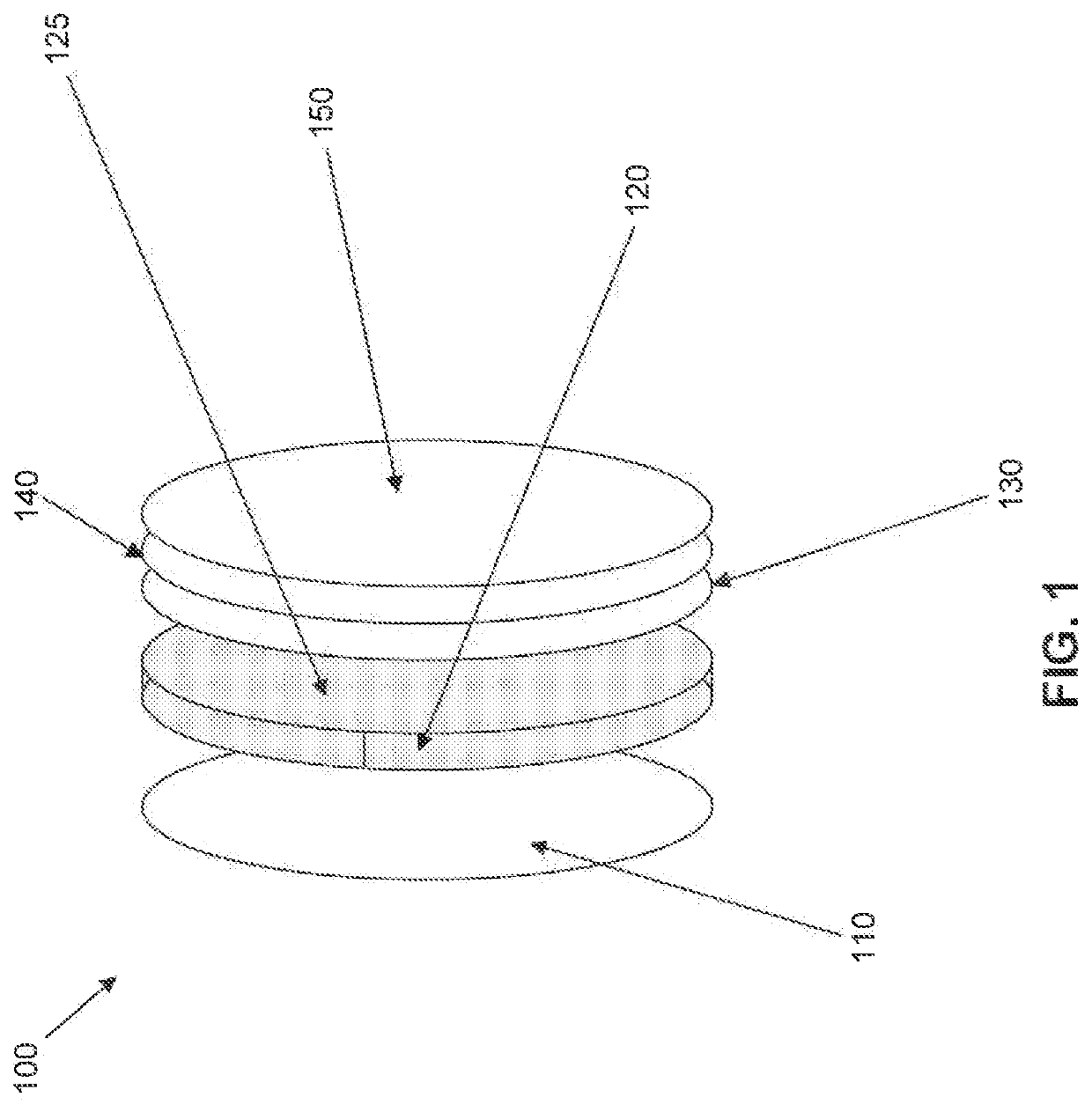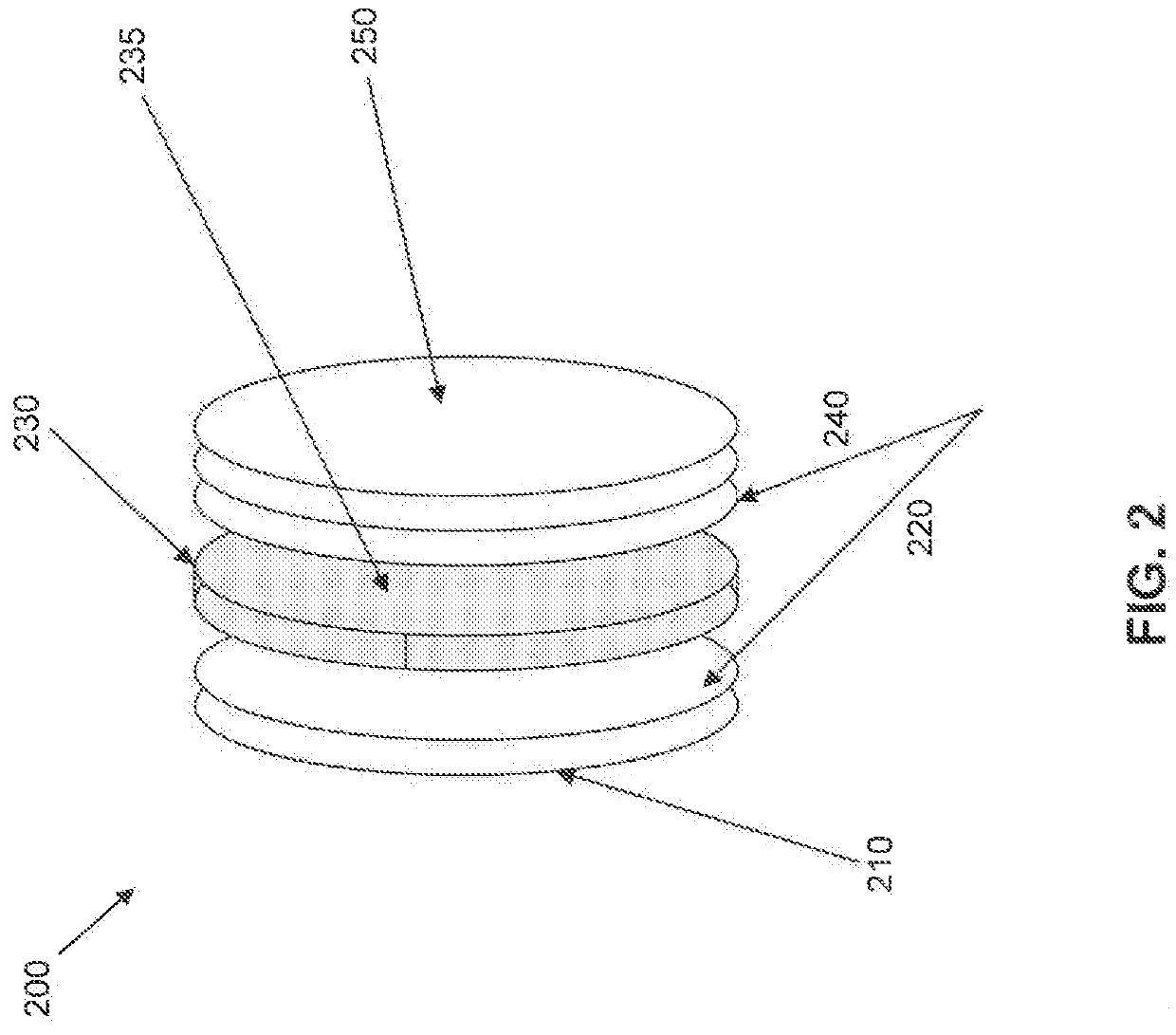Thermally influenced changeable tint device
a technology of changeable tint and thermal influence, which is applied in the field of photochromic eyeglasses, can solve the problems of insufficiently satisfying the limitations of the day state of the art photochromic eyeglasses, the switching time of darkening is too slow and outdoors, and the photochromics never switch, etc., and achieves the effect of enhancing the performance of an opti
- Summary
- Abstract
- Description
- Claims
- Application Information
AI Technical Summary
Benefits of technology
Problems solved by technology
Method used
Image
Examples
tenth embodiment
[0176]FIG. 17 shows a lens 1700 incorporating a cooling element, a heating element, an optic, and a photochromic layer. Lens 1700 includes, from the back of the lens (closest to the eye) to the front, a first anti-reflection coating layer 1705, a first hard coat layer 1710, an optic 1720, a second hard coat layer 1730, a cooling element 1740, a photochromatic layer 1750, a heating element 1760, a hard coat layer 1770 and a second anti-reflection coating layer 1780. Cooling element 1740 may have further layers, such as those illustrated in FIG. 16. FIG. 17 corresponds to the
eleventh embodiment
[0177]FIG. 18 shows a lens 1800 incorporating a thermally switchable polarized layer, a heating element, an optic, and a photochromic layer. Lens 1800 includes, from the back of the lens (closest to the eye) to the front, a first anti-reflection coating layer 1805, a first hard coat layer 1810, an optic 1820, a second hard coat layer 1830, a thermally switchable polarized layer 1840, a photochromatic layer 1850, a heating element 1860, a hard coat layer 1870 and a second anti-reflection coating layer 1880. FIG. 18 corresponds to the
[0178]Embodiments disclosed herein comprise a system which includes the photochromic optic or layer and associated electronics. While some embodiments disclosed herein discuss the optic or layer comprising a photochromic agent or agents being that of a polymer layer, such a layer or optic in certain embodiments could be that of glass. Some embodiments are a very elegant way to solve a pressing long term unmet need. It should be understood when the term op...
second embodiment
[0185]In a second embodiment a performance enhanced photochromic optic that comprises a heating element, by way of example only, that of a mostly transparent electrically enabled heated surface or layer is located close to or adjacent to a layer of material comprising a photochromic agent. The mostly transparent electrically enabled heated surface or layer is comprised of a layer, by way of example only, of thin glass or plastic having a heating element or member on its surface or buried within. The heating element or member can be that, by way of example only, of indium tin oxide which is capable of being energized or activated by the application of electricity and de-energized or de-activated by the removal of electricity. Any electrically conductive material (including that of a conductive polymer) can be used to make the heating element provided it meets the transparency needs for the performance of the optic. In a preferred embodiment the heating element is located on the side ...
PUM
| Property | Measurement | Unit |
|---|---|---|
| glass transition temperature | aaaaa | aaaaa |
| glass transition temperature | aaaaa | aaaaa |
| temperature | aaaaa | aaaaa |
Abstract
Description
Claims
Application Information
 Login to View More
Login to View More - R&D
- Intellectual Property
- Life Sciences
- Materials
- Tech Scout
- Unparalleled Data Quality
- Higher Quality Content
- 60% Fewer Hallucinations
Browse by: Latest US Patents, China's latest patents, Technical Efficacy Thesaurus, Application Domain, Technology Topic, Popular Technical Reports.
© 2025 PatSnap. All rights reserved.Legal|Privacy policy|Modern Slavery Act Transparency Statement|Sitemap|About US| Contact US: help@patsnap.com



